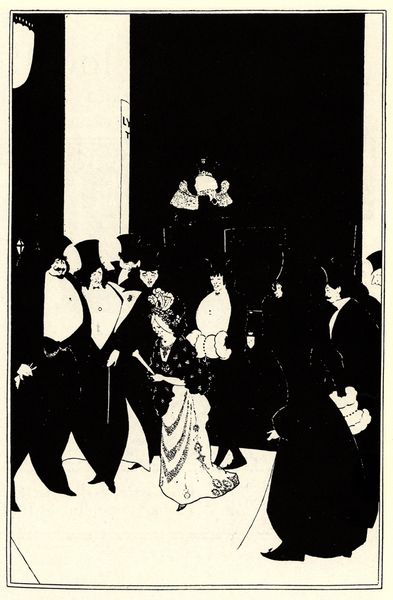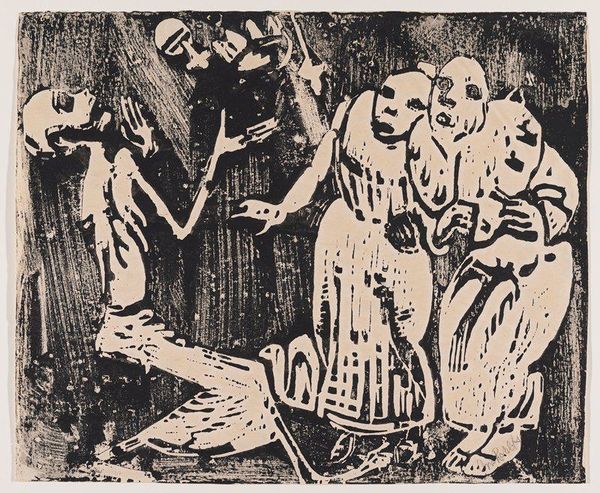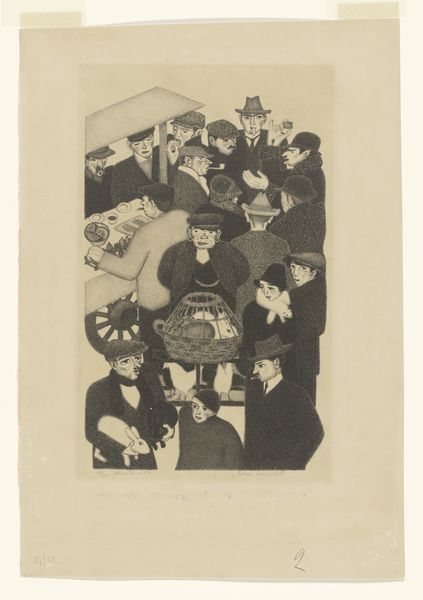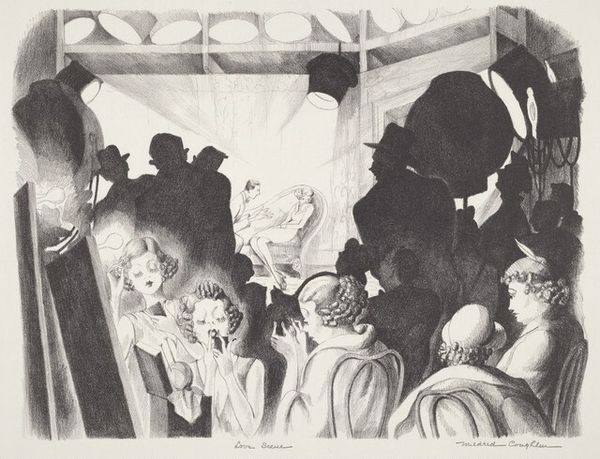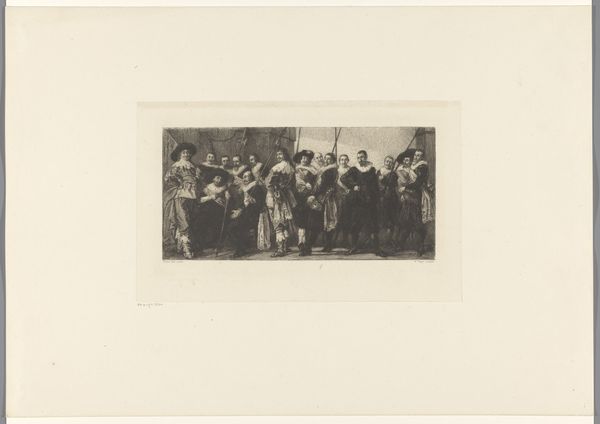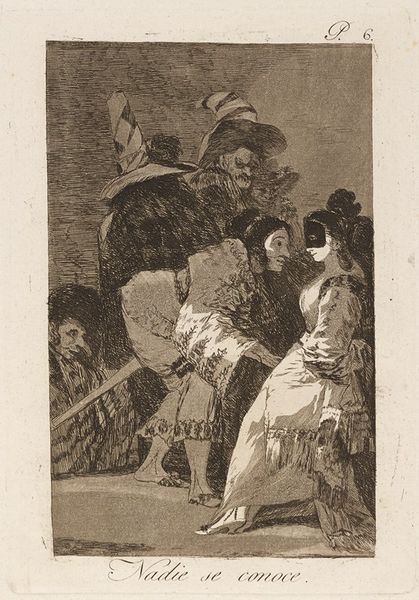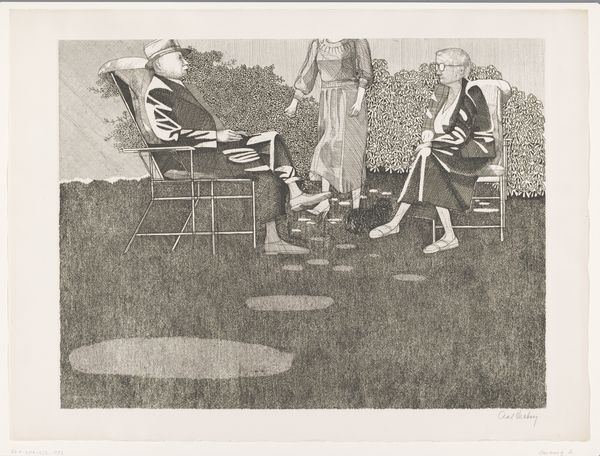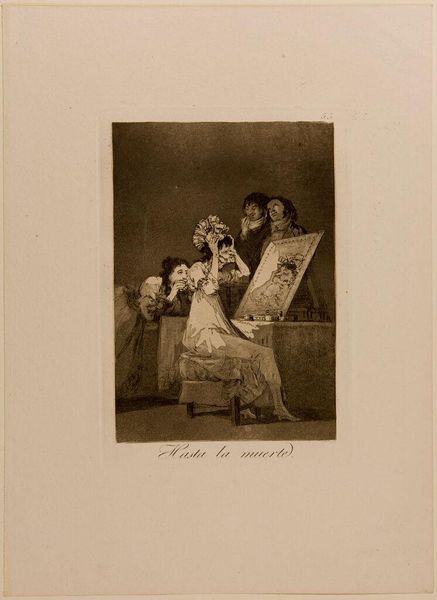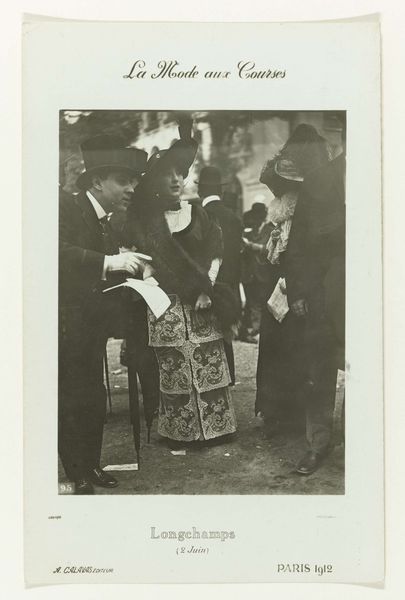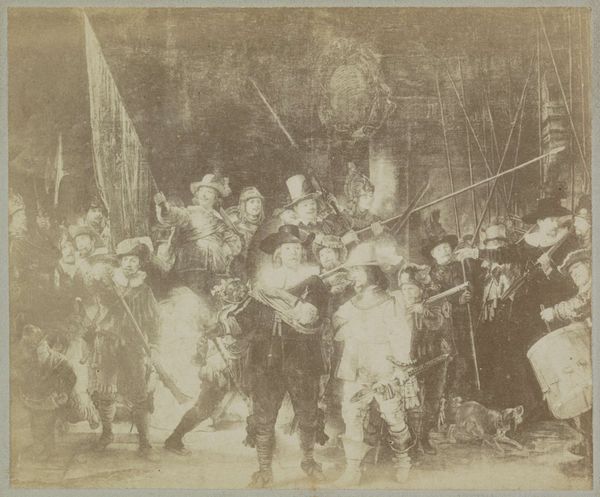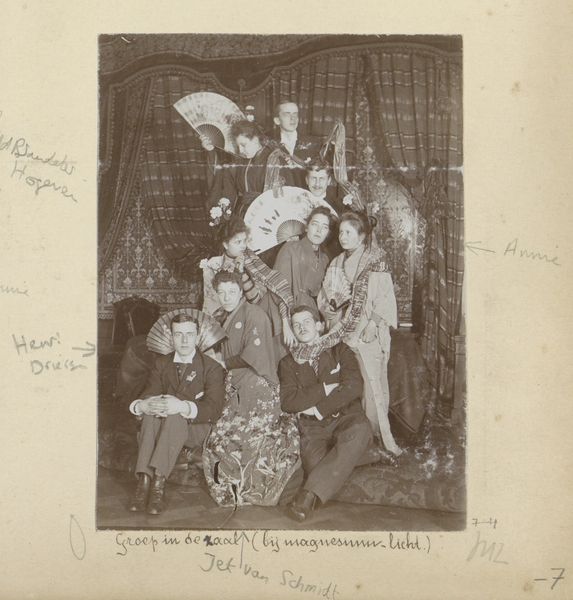
Dimensions: plate: 180 x 254 mm sheet: 278 x 305 mm
Copyright: National Gallery of Art: CC0 1.0
Editor: We're looking at Clara Gardner Mairs' "Negro Wedding" from around 1938, a print made with ink on paper. The dark figures against the textured background create an intriguing visual rhythm. What jumps out to you as you examine the piece? Curator: Immediately, the stark contrasts command attention, wouldn't you agree? The composition exhibits a deliberate orchestration of light and shadow. Consider the formal interplay between the solid black figures and the areas of fine, almost granular, texture created by the etching technique. Editor: It does seem quite deliberate. The textures definitely guide my eye around the composition. Can you elaborate on what the contrast adds to the meaning? Curator: The high contrast creates an overall mood that’s unsettling yet fascinating. The figures are presented in silhouette, obscuring their features. Without details, their expressions become ambiguous and generalized. The textures—the speckled floor, the lace of the dress, the curtain—add both visual interest and depth to an otherwise flattened picture plane. The figures almost become formal devices that balance and support each other, a marriage of abstract forms to convey a narrative. Editor: It’s fascinating to consider the piece primarily in terms of form and texture. How do you move past the immediate impact of the figures and the implied narrative? Curator: By focusing on the objective elements—line, shape, and tonal range. Note the repeated motifs: circles, rectangles, and triangles that are dispersed rhythmically. We must ask ourselves: what purpose does such a structured system serve within this representational image? Ultimately, Mairs created a powerful study in balancing tonal harmony with inherent formal contradictions. Editor: So by focusing on these visual components, we begin to see it as an act of structured contrasts, playing with darkness and light rather than a simple scene. Curator: Precisely. We’ve come to view the wedding not merely as a depicted event, but as an artful synthesis of carefully balanced formal devices and skillful artistry.
Comments
No comments
Be the first to comment and join the conversation on the ultimate creative platform.
